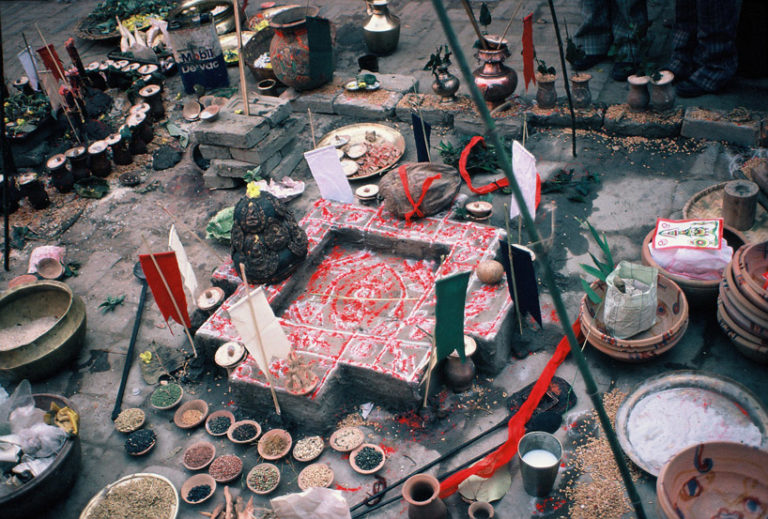By Anne Vergati
Dec 10th 2009
The distinguishing feature of Newar society
in the Kathmandu Valley is the coexistence between Buddhism and Hinduism
for centuries. On the level of personal religion the Newars define themselves
as Hindus or Buddhists and employ a Buddhist priest (vajracarya)
or a Hindu priest (Brahman). Religious syncretism is present especially
in the texts and pilgrimage guides. It is important to draw a distinction
between rituals described in the texts and religious practices. The
texts are known only by those who can read the religious texts, in this
case, the priests. The inhabitants of the Valley are familiar with the
images of the gods and goddesses and their symbols. In the unfolding
of each ritual, oral tradition plays a considerable part.
The rites
de passage give a social and ethnic identity. Among the Newars are two
specific rituals: the ritual marriage of pre-puberty girls (ihi)
with a god, Vishnu Narayana for Hindus and Buddha Vairocana, the lord
of the Body, for Buddhists. The second ritual, called bhimaratha
or bura jyanko is celebrated by a man or a woman who has reached
the age of 77 years, 7 months and 7 days and insures the passage of
a person from the world of men to the world of the gods.
The ritual of marriage, a collective ceremony, celebrated by Buddhists
took place in the eastern part of the Valley at Thimi in 1984. The first
day began with the setting up of a mandala of Vajradhatu; Buddha
Vairocana is placed in the centre. A statue of Buddha Vairocana had
been made at Patan and was consecrated by the Buddhist priest after
the setting up of the mandala. The measuring of the body of the
young girls makes the second part of the unfolding of the first day's
ritual. The marriage ritual with the gift of the young woman and the
walking procession around the fire take place on the second day in presence
of the priest.
A part from the priests, two other categories
play a significant role in the unfolding of the rituals: painters and
potters. Only the priest knows the text in newari and Sanskrit which
will be used during the celebrations of the ritual. The links
between the image of Buddha Vairocana and the text used by the priest
are clear but the ritual objects like the vajra or the bell have
as much importance as the images.


